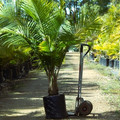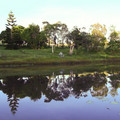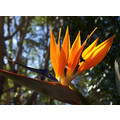Although palms are a very attractive addition to any garden or lawn space, some care and maintenance must go their upkeep. If you want to hang on to the lush tropical and exotic feel that these palms bring, be aware of the different pests.
There are many known types of pests and insects that hasten or slow down the growth of palm if not completely killing them. Generally if a palm is healthy with normal water and food, pests will not do serious harm.
Here is a list of some of the most well known types of pests that are particularly fond of palms in Australia:
SUGAR CANE WEVIL BORER
This insect was in nth QLD but is now in southern QLD and nth NSW.
The grub eats holes into the base of the palm trunk at about ground level, eventually killing your palms. This grub is about 2 cms long and 6 mm wide with a white body.
The adult is gun barrel grey and is often nearby, best way to kill it is with a systemic insecticide , household fly will do if applied to the insect or into its hole.
The sugar cane borer lives in old established palms where the fronds meet the trunk and does no harm to such a big trunk. Unfortunately the adult may infect nearby your palms, especially if they are under stress.
The borer is most active over summer and likes Golden Canes, Bangalows, Kentias, Foxtails and Kentias best. I have never seen it attack some cold palms like Chamerops humilis, Cascades, Rhapis, rarely Solitares
This borer is smaller than the Giant Palms Borer but is just as much of a problem. If a young palms dies and you notice the white grub then destroy the dead palm, the smell of the infestation attracts the adult again also grubs will be inside the trunk , clean excess dead fronds from surrounding palms, spray the lower trunk with a systemic insecticide or just
a surface household insecticide then check for borer holes or grubs in the coming weeks say 4 to 6 The life cycle is something like this but if there are old palm trees nearby within 10 metres then the palms may become re infested.
Eventually the palms are too old for the borer to harm , sometimes a 2 metre palm in full sun with a trunk width of 10 cms is safe. But other times the borer will damage large Kentias and Foxtails at 8 metres tall plus
Giant Palm Borer
The Giant Palm Borer is a large beetle that is quite unattractive to look at. Its larvae are quite fond of palms in the Australian region. These borer grubs can actually exist inside a palm trunk for a period extending up to nine years. They develop into full-grown beetles within that time and exit through holes in the palm trunk.
When a borer infestation goes out of control or reaches a maximum, they can weaken the structure of even the sturdiest palm. It is best to watch out for an infestation during the early stage.
Unfortunately, there isn't much you can do to combat an infestation of the Giant Palm Borer. Since the growth happens inside, you won't be able to tell whether your palm is holding a family of beetle pests or not. Usually, it is too late once you do find out, when they have already exited your palm and done the damage.
The best thing you can do is to prevent the infestation from happening in the first place. Keep your palms properly cared for and maintained to lessen the chances of a Giant Palm Borer attack.
Palm Budworm
This type of pest is also from the family of beetles. Its larvae like to feed on the flowers of different types of palms. The worms are about an inch in length and have shades of pink and green. The moths are a murky brown and characterized by a dark spot on each wing.
Although Budworms are not particularly dangerous to the life of your palms, they can still be quite annoying to have around. Very intense infestations of the budworm may also cause the structure of your palm to weaken considerably.
To exterminate the pests from your palms you can contact your local forestry office or specialist. There are some brands of chemicals that can effectively rid your plans of these insects. Make sure to follow instructions carefully to keep you and your plants safe.
Royal Palm Bug
This little critter has a particular taste for palms. In fact, it is the only thing that it feeds on. Once it has settled in the leaves of a palm, it lays one egg a day, for the whole of spring. The egg is protected by the palm leaves until they are ready to hatch.
After about nine days, the eggs hatch producing new bugs that proceed to munch on the leaves, causing them to yellow. When there are extreme numbers of bugs chewing on one leaf, it will turn brown and eventually wilt.
It does not really cause extensive damage to the palms but having them around may lead to unsightly looking palm leaves. As full-grown palms can be considerably hard to reach, Royal Palm Bugs are a challenge to exterminate.
To exterminate royal palm bugs spray them with insecticide. This may pose a problem since these pests are not known to attack palms that are less than 4 metres in height. In that case, you may need a ladder for direct application. Another solution to try is imidacloprid (Merit), which you can apply to the base system and roots of your palms.
These are just some of the pests that may inhabit your palms. If you do not perform routine checks, you may end up losing your beautiful palms to these pesky parasites.
<< Previous Palm Fertilizer and Best Practices | Back to Mullumbimby Palm Blog | Next >> Palm Pollination in a Nutshell



